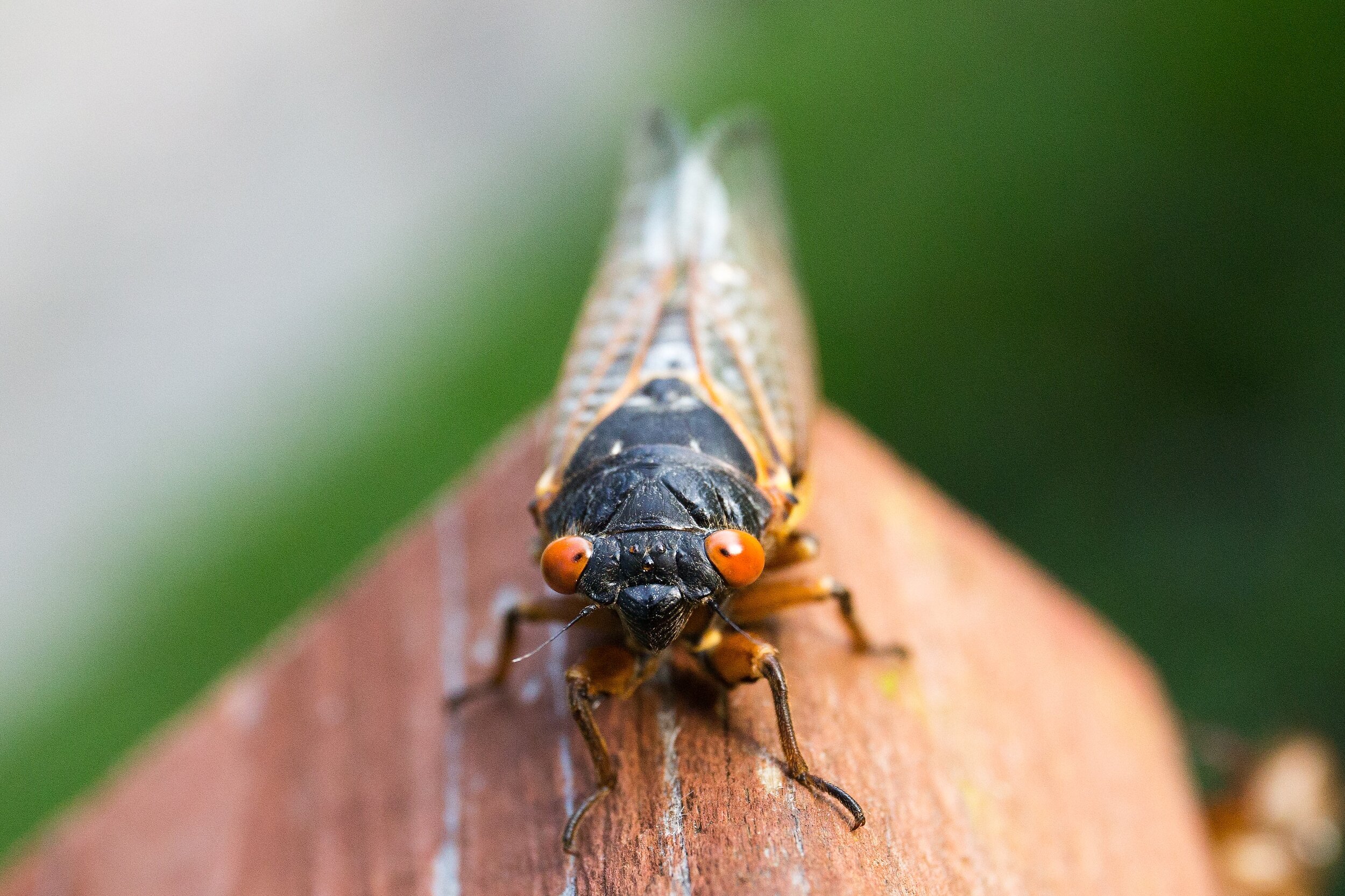Brood X: The Cicadas Return
By Aprille Hunter
You may have heard rumors of the 17-year cicadas, or Brood X, set to emerge this year in the millions. Fairfax County Parks announced the pending arrival of the cicadas on Twitter this year in March. According to the post, the cicadas should be emerging between late April and early May. They are harmless to humans, but not to young trees.
Rather than feeding on trees, the periodical cicadas carve slits into narrow tree branches to create room to lay their eggs. When done in large numbers, this can be especially harmful to young trees. The slits are large enough to be seen upon inspection, and the leaves on the ends of the affected branches will turn brown and hang down. The affected species of trees will be diverse, ranging from native trees to ornamentals. The likelihood of your trees becoming a host will depend upon how dense the population is in our area, but generally, evergreen trees are not preferred. The sticky sap in evergreens keeps cicadas away naturally.
Unfortunately, there is no effective chemical to help protect your trees. Right now, we would recommend on holding off from planting new trees if at all possible. Jim Donegan suggests doing your new plantings in the fall of 2021, after the cicada season has ended. That will be a great time to plant trees and we have another post with more planting details to help you when the time comes.
If you already have young trees in your yard, consider purchasing an impenetrable netting, such as row cover, to wrap around the branches and trunk of the tree. Secure the netting at the lowest part of the trunk and make sure there are no gaps for cicadas to crawl through. As soon as the egg-laying season ends, about 6 to 10 weeks after they emerge, the netting should be removed.
We’re hoping the mature trees won’t be severely damaged by the cicadas, but if you notice a lot of die back on your branches, give us a call and we’ll come inspect your trees to figure out the best next steps.

